Which pipe to choose for the chimney: regulatory guidelines and rules
Installation of a stove or fireplace involves the arrangement of a smoke removal system. In this matter, it is not enough to choose the right pipes for the chimney, it is still necessary to observe a lot of construction and fire regulations. Otherwise, the operation of heating equipment will be ineffective and unsafe.
Mistakes made during the installation of the chimney not only reduce the return on the operation of the furnace, but can also lead to tragedy. Our material will focus on how to avoid the most common installation errors. In addition, we will tell you how to choose the right pipes for chimneys.
The content of the article:
Chimney regulations
The main and only purpose of the chimney is the removal of exhaust gases from the boiler into the atmosphere outside the building where the stove, boiler or fireplace is installed. At the same time, the efficiency of the heat-generating equipment directly depends on its proper installation.
You can put a boiler in the house with excellent efficiency, but make mistakes when chimney installation. As a result - excessive consumption of fuel and the lack of comfortable air temperatures in the rooms. At the chimney, the cross-section, location, configuration and height must be correctly selected.
If the house has two boilers or a stove and a fireplace in different rooms, then it is better to make separate smoke pipes for each of them. The option with one chimney is allowed by SNiPs, but only a professional stove-maker can correctly calculate it.
The diameter of the chimney is selected depending on the heating equipment used. When installing the boiler, it is already set by the manufacturer by the branch pipe. It is forbidden to connect pipes of a smaller cross-section to it, and a larger one is simply not necessary. In the second case, to increase traction, you will have to mount a gearbox, which costs a lot of money.
In case of by the fireplace or Russian brick oven everything is somewhat more complicated. Here you will have to do engineering calculations taking into account the fuel used and the size of the furnace. It’s much easier to take ready brick kiln projecttested by time. Fortunately, there are many options with an already clearly verified order of masonry.
The higher and longer the chimney, the stronger the draft. However, this can lead to overheating and destruction of its walls. Plus, a strong increase in draft is a prerequisite for turbulence in the chimney, which is accompanied by a hum and low-frequency noise.
If the pipe is too low, the ridge can turn into an insurmountable obstacle to the smoke coming out of it. As a result, the effect of reverse thrust will occur with the flue gases toppling back into the furnace. How to normalize it will be discussed in this stuff.
With the normal functioning of the chimney, the horizontal wind flow, flowing around the pipe section above the roof, turns up. As a result, discharged air is formed above it, which literally “sucks” smoke from the exhaust. However, this process can be hindered by the pitched roof ridge and even a tall tree in the immediate vicinity of the house.
Standards for smoke exhaust system
Building codes require a chimney to be done as follows:
- Its length from the grate to the upper point should be from 5 meters (an exception is possible only for buildings without attics and only in conditions of stable forced traction).
- The optimal, taking into account all possible bends, is considered to be 5–6 m high.
- The distance from the metal chimney to the structures of combustible building materials should be from a meter.
- The horizontal outlet immediately after the boiler must not exceed 1 m.
- When passing roofing, walls and ceilings inside the house, a channel of non-combustible materials should be equipped.
- To connect the metal elements of the pipe, the sealant should be used exclusively heat-resistant with a working temperature of 1000 ° C.
- The chimney should rise at least 50 cm above the flat roof.
- If a non-brick chimney is built above the roof level by 1.5 meters or more, then it must be strengthened with the help of extensions and brackets.
Any inclinations and horizontal sections will inevitably reduce draft in the chimney pipe.If you cannot make it straight, then bends and displacements are best done from several inclined segments at a total angle of up to 45 degrees.
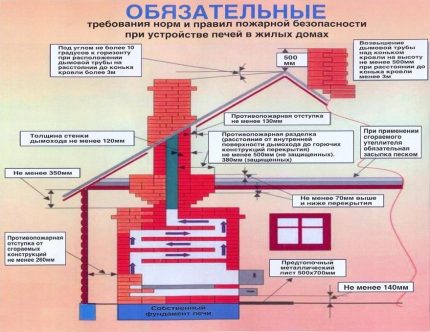
When installing ventilation and chimney shafts in parallel in the same structure above the roof, they should in no case be covered with a common hood. The outlet from the furnace must necessarily rise above the ventilation pipe, otherwise the draft will decrease, and the smoke will begin to suck back into the house. The same applies to individual, but adjacent hoods and chimneys.
Chimney material selection
Laying a chimney in a private residential building can be performed in several ways:
- With a passage through the attic floor and roof.
- With the conclusion of the external walls and exclusively inside the building.
- With a passage only through the roof, bypassing the floors.
- Directly supported by a boiler or stove, or with wall mounting.
- With displacement of the vertical center line and in strictly direct execution.
The choice of the final configuration depends on the layout of the living rooms, the location of the heating unit, as well as the individual features of the design and architecture of the cottage. In each case, it is recommended to choose your own version of the chimney.
It remains only to figure out which pipe to choose for the chimney, which material is best suited for this.
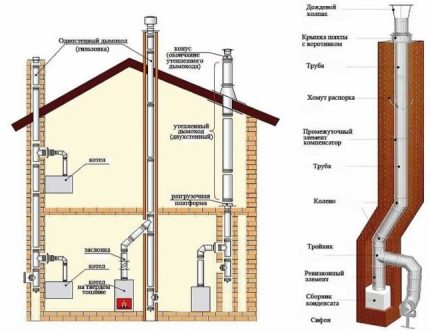
You can make a chimney from:
- brick;
- iron or asbestos pipes;
- ceramics;
- concrete;
- heat resistant glass.
It can be either round, square, or rectangular. Moreover, it is the first of them that is the most optimal. Of all the materials, self-assembly only with heat-resistant glass can cause problems. Its installation will require a special supporting structure, competently and with a guarantee that only a specialist can assemble it.
Option # 1 - traditional brick
Chimneys from burnt bricks have been made for more than a century. These are traditional and well-studied by professional stovemakers designs for the removal of flue gases. But they have to be done simultaneously with the construction of a dwelling, for heavy brickwork it is necessary to fill in a separate foundation.

Among the advantages of a brick pipe are high fire safety, attractive appearance, knowledge of the design and additional heat transfer from masonry. And among the shortcomings are the high cost of the work, the large weight and the need for a foundation, as well as the strong roughness of the walls.
In general, brickwork is a reliable and effective option for organizing a chimney. And the existing shortcomings can be easily circumvented by the banal installation of a stainless steel pipe inside the shaft. The steel liner will prevent clogging with soot and will take on part of the heat load, thereby protecting the brick and extending its life.
Brick chimneys are constructed primarily using solid fuels. They are satisfied with mounted, i.e. installed on the ceiling of the stove, indigenous in the form of a separately constructed vertical outlet, and wall - located inside the supporting wall.
When using a metal insert with a round cross-section inserted inside a brick chimney, it can serve as a chimney for gas heating and cooking units.
Option # 2 - Galvanized and Stainless Steel
Galvanization and stainless steel are resistant to corrosion and the aggressive environment generated by the combination of condensate and furnace gases. They are light in weight and do not need an additional foundation; reliable fasteners to the wall will suffice for installation.
On sale steel chimneys can be found:
- Single-walled - without thermal insulation material.
- Double-walled - sandwiches with insulation between steel walls.
When installing a steel chimney outside the facade, it must be insulated, otherwise heat loss and heavy condensate will negate all the advantages of this option. Thermal insulation is used on chimney sections extending beyond the roof and passing through an unheated attic.
At the cost of components, a chimney made of stainless or galvanized steel will be cheaper than brick and ceramic counterparts.
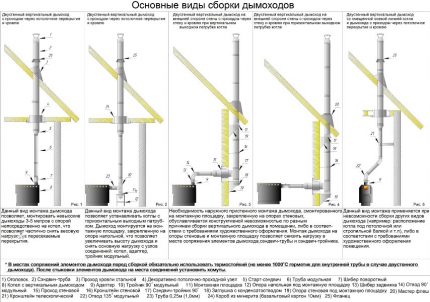
The chimney duct is assembled from:
- rain hood;
- tees;
- knees;
- inserts with inspection hatches;
- straight pipes;
- collectors for condensate.
All this must be simply mounted together by inserting one section into another and coating the joints with heat-resistant sealant. Such chimneys are suitable for almost all types of furnaces and fuel. Galvanized and stainless steel can withstand decades of heat and soot for decades.
The smooth surface of the steel walls optimizes the removal of combustion products, eliminates the accumulation of soot. Chimneys made of steel pipes are suitable for gas, liquid and solid fuel furnaces. Metal modules are used for the construction of a chimney in whole or in part with its connection to a brick channel or installation in the form of an insert.
Option # 3 - cheap asbestos cement
Pipes made of natural asbestos with cement as a binding material began to be widely used in our country in Soviet times. They were cheap, durable and produced in large quantities. They were mainly used in agriculture for land reclamation.
Initially, asbestos-cement pipes were not intended for the installation of chimneys. They are too fragile for this and cannot tolerate high temperatures. However, the price issue in many cases plays an important role. If you have cheap material at hand, then it is necessary to use it, leveling problem areas in one way or another.
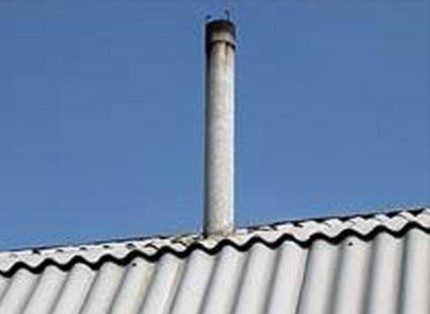
Asbestos pipes have another problem - the roughness of the walls from the inside. Soot gradually accumulates on them, which can catch fire and simply explode. Plus, with the constant formation of condensate from a mixture of combustion vapors and oxides inside the condensate, asbestos cement begins to break down.
This material is cheap, but using it to equip chimneys carries a strong risk. Such pipes should be cleaned more often. However, it is impossible to make an inspection hole in them; it will have to be provided for in the section from the furnace to asbestos cement.
Smoke channels from asbestos-cement pipes are performed mainly in the packed version. The priority is the simplest scheme of the device and the vertical arrangement of all elements. If necessary to perform a slope, nozzles of non-combustible materials are used.
Option # 4 - exotic made of ceramic and concrete
Ceramic chimneys are distinguished by unsurpassed durability and high price. They are not afraid of overheating, soot aggressiveness and corrosion. These pipes have very smooth walls, soot on which does not even linger.
During installation ceramic chimneys are assembled just like steel. Only around them is still formed a box of expanded clay concrete. Such pipes practically do not heat up. Even that small part of the heat that is given off by inert ceramics is absorbed by expanded clay concrete walls. A fire in a house due to the burning of such a chimney is nonsense.
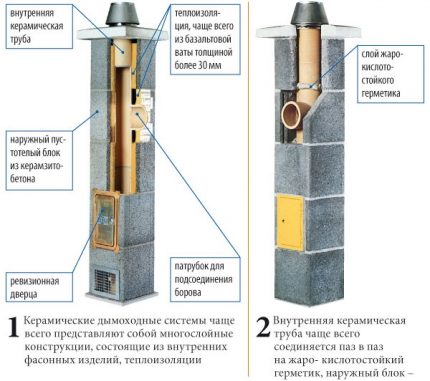
A chimney construction made of ceramic and expanded clay concrete weighs much less than brickwork of a similar purpose. But even in this case, she has to make a separate small foundation.
An even more massive monolithic base will have to be performed for a chimney made of concrete. This option of smoke removal is rarely used precisely because of the complexity and complexity of manufacturing structures. It will be necessary to install the formwork, and then wait for the concrete to solidify.
Common mistakes of beginners and self-taught
In the first place among the oversights is the wrong chimney height. Too high a variant creates excessive draft, which increases the likelihood of tipping over and drawing the smoke back into the furnace and the room with the stove. 5-6 meters are considered optimal, but much here depends on the size of the combustion chamber and the configuration of the chimney.
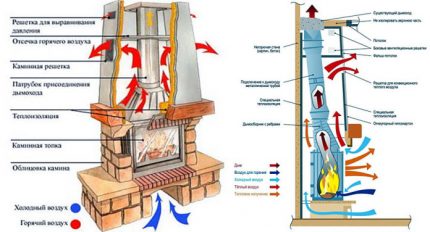
It is impossible to allow overcooling of the chimney and its excessively strong heating as a result of intensive combustion of fuel in the furnace. Everything should be in moderation, otherwise the pipe may crack. To facilitate the identification of these cracks, you should whitewash a section of the chimney in the attic. On a white background all soot “drips” will be noticeable.
Often, beginners when installing a steel chimney flue forget to ensure the removal of condensate. To do this, you need to make a special collection and insert hatches for revision into the pipe. Mistakes are made in the choice of steel grade.
During normal burning of firewood, gas or coal in a fireplace or boiler, the chimney warms up to 500–600 ° С. However, the temperature of the smoke, even if briefly, can rise to 1000 ° C. At the same time, after a few meters from the furnace, they cool down to 200-300 degrees and do not pose a threat to the pipe.
But its initial meter section from the boiler manages to heat up very much. Steel must be heat resistant and able to withstand these loads. And the insulation of a steel pipe should be made only a couple of meters from the furnace to prevent overheating of this segment of the chimney.
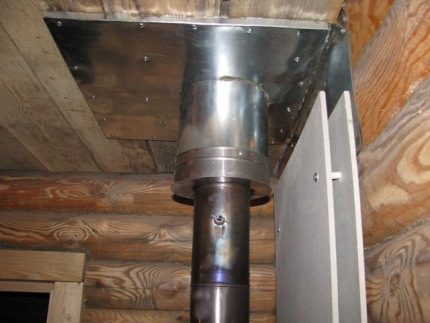
When laying bricks by an inexperienced craftsman, vertical displacement of their rows relative to each other is often allowed. When erecting walls, this is allowed, but in the case of a chimney, it is absolutely unacceptable. This greatly reduces the efficiency of the chimney channel, since flow swirls and soot deposits on the walls begin to form in it, which will eventually require cleaning. And how to do it right can be read in this stuff.
The foundation under the brick chimney must be highly reliable, otherwise the pipe may be driven to the side with its subsequent partial or complete destruction. And if smoke removal is done for a gas boiler, then it is better to exclude a brick. It quickly collapses under the influence of an alkaline medium formed during the combustion of natural gas.
Conclusions and useful video on the topic
What mistakes are most often made when installing furnaces and chimneys to them:
How to lay chimneys made of brick:
How to make a chimney from a stainless steel:
Reliable chimney pipes can be made from various building materials. The choice of options is quite extensive. The easiest way to perform a chimney is from steel, and cheaper from brick.
But if you need the most durable and safe furnace smoke removal system, then ceramics is the undisputed leader. It is expensive, but will last more than one decade.The main thing when installing all the options to comply with construction and fire regulations.
After studying the material, there were incomprehensible moments and I would like to find out? Please leave your comments at the bottom of the article. Here you also have the opportunity to report interesting facts on the topic of the article or share your own experience with visitors to the site.


 Insulation for a gas chimney: options for thermal insulation and technology of insulation of chimneys
Insulation for a gas chimney: options for thermal insulation and technology of insulation of chimneys 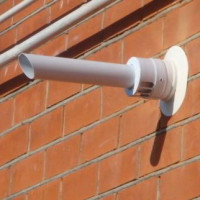 The device, varieties and installation rules of coaxial chimneys
The device, varieties and installation rules of coaxial chimneys 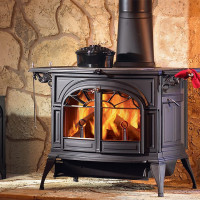 Wood stoves for heating a private house: rating of popular models + benchmarks for the buyer
Wood stoves for heating a private house: rating of popular models + benchmarks for the buyer 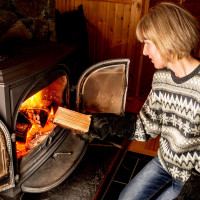 Chimney sweep log for chimney cleaning: composition of the product and rules of use + owner reviews
Chimney sweep log for chimney cleaning: composition of the product and rules of use + owner reviews 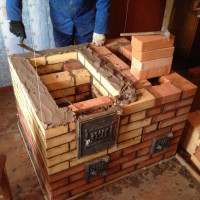 Brick stove for the home: guidelines for choosing the optimal type and examples of routines for independent masters
Brick stove for the home: guidelines for choosing the optimal type and examples of routines for independent masters 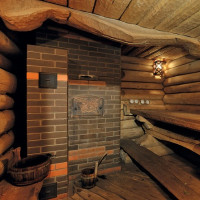 Russian bath stove: TOP-10 and guidelines for choosing the best model of a sauna stove
Russian bath stove: TOP-10 and guidelines for choosing the best model of a sauna stove  How much does it cost to connect gas to a private house: the price of organizing gas supply
How much does it cost to connect gas to a private house: the price of organizing gas supply  The best washing machines with dryer: model rating and customer tips
The best washing machines with dryer: model rating and customer tips  What is the color temperature of light and the nuances of choosing the temperature of the lamps to suit your needs
What is the color temperature of light and the nuances of choosing the temperature of the lamps to suit your needs  Replacement of a geyser in an apartment: replacement paperwork + basic norms and requirements
Replacement of a geyser in an apartment: replacement paperwork + basic norms and requirements
Brick chimney - this is the last century. I don’t quite understand why it is still popular and people put it on. Perhaps because of the cheapness. But modern chimneys are much more convenient and durable. Plus, it can be brought out at any angle. I put a stainless steel pipe in the country - light, flexible, ductile, easy to assemble. It does not require any additional designs. And it looks pretty.
I recently folded the stove for the bath. Used galvanization for the chimney. He made the pipe himself, secured the ends of the sheet with an ordinary folding lock. Then he painted the resulting pipe with metal paint. He led her closer to the edge of the roof, so that between the ridge and the chimney was 1.5 m. The height was determined flush with the maximum point of the height of the roof. Winters are always snowy, and less will supply snow and water to the pipe. Well, of course, I didn’t forget about the chimney hood. The chimney turned out better than if I bought it in a store or laid it out of brick.
For a long time I’m going to arrange a fireplace in the house, I thought it was easier to install. After reading this information, I realized that there are many pitfalls and I need to approach the matter with all seriousness. It is necessary to carry out engineering calculations and purchase exactly the right material. Reading you, I develop and learn a lot of new things for myself, just for me it is all a dark forest. I would like to know: what calculations are taken to install a fireplace for a 2x4 house?
Sorry, clarification required. 2x4 house? In the meantime, we are expecting an answer from you, I want to say that in general, there is nothing complicated in the construction of fireplaces. The only thing if you choose the order from the Internet, it is better to show it to an experienced master for verification. On seemingly authoritative resources, I met very strange orders without observing the alternation of seams, for example.
And a personal life hack - you can take the Lego constructor from the child with large details and immediately before construction, add a model of the future fireplace from it to check everything again. Although, in principle, if you get a little knowledge, you can build a fireplace without similar models.
At the beginning of the plot it is said about the high cost of the brick chimney, and at the end that the chimney is made “cheaper from brick”. Where is the truth ?
Hello. And really, the author started talking. Apparently at the beginning of the article he had in mind about the material + the cost of work + sleeve, and at the end of the article he forgot that not all of us are master stove-makers and will be able to equip all this with a minimum of costs 🙂
Do I need to install a valve on a metal chimney pipe? A metal stove with a cooker (I don’t know the brand - presented), a heating stove, a log house. The height of the oven is 52 cm, I will make a stand with a height of 35 cm.House 4 by 5 meters, the ceiling is approximately 2.3 meters.
I would be very grateful for the comment or link to a competent specialist. I myself have never come into contact with this yet, but my head seems to be "cooking." Thank.
p.s. By the way, the article is very useful!
Hello. A gate is already needed even to adjust the intensity of fuel combustion and to avoid drawing warm air into the furnace tube after burning.